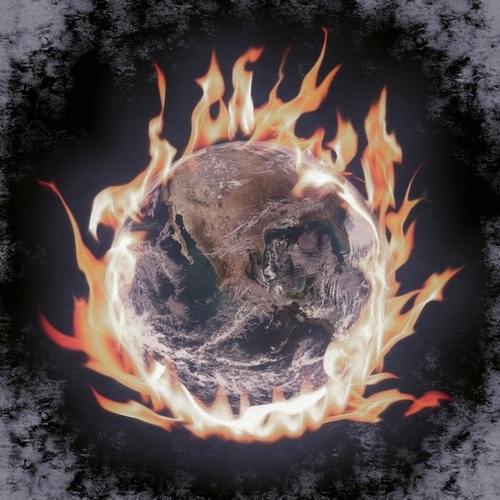
(function(d, s, id) { var js, fjs = d.getElementsByTagName(s)[0]; if (d.getElementById(id)) return; js = d.createElement(s); js.id = id; js.src = “https://connect.facebook.net/en_US/sdk.js#xfbml=1&version=v3.0”; fjs.parentNode.insertBefore(js, fjs); }(document, ‘script’, ‘facebook-jssdk’)); –>
–>
August 7, 2023
On July 27, 2023, the United Nations turned up the heat on the global climate hoax by declaring “the era of global warming” has now morphed into “the era of global boiling.” With typically hysterical rhetoric, UN Secretary-General António Guterres said that, “short of a mini-Ice Age” in the coming days, July 2023 would likely “shatter records across the board.” In Geneva, scientists from the World Meteorological Organization (WMO) declared that July 2023 was set to be “the hottest month on record.” Carlo Buontempo, the director of the European Commission’s Copernicus Climate Change Service, echoed the UN in declaring, “Unless an ice age were to appear all of a sudden out of nothing, it is basically certain we will break the record for the warmest July on record and the warmest month on record.”
‘); googletag.cmd.push(function () { googletag.display(‘div-gpt-ad-1609268089992-0’); }); document.write(”); googletag.cmd.push(function() { googletag.pubads().addEventListener(‘slotRenderEnded’, function(event) { if (event.slot.getSlotElementId() == “div-hre-Americanthinker—New-3028”) { googletag.display(“div-hre-Americanthinker—New-3028”); } }); }); }
This all-too-obvious coordinated drumroll of frightening climate change warnings has become the propaganda technique of choice for international organizations who presume responsibility for controlling Earth’s climate. The only problem with the current theme of the month—namely, that July 2023 was the “hottest” month on record—is NOT true. But truthfulness is apparently a less worthy goal to the UN, the WMO, and the European Commission than making sure we stop using hydrocarbon fuels, the energy that has allowed modern industrial states to prosper during our good fortune to be experiencing an interglacial warming period. The whole point of these announcements is to scare people. “Climate change is here,” the UN chief said. “It is terrifying. And it’s just beginning.”
The lying appears ubiquitous among government agencies monitoring the weather. The U.S. Environmental Protection Agency (EPA) has “disappeared” an internet page that demonstrated that, 90 years ago, we experienced a far greater wave of heat than we are experiencing today. For now, the NASA “Global Climate Change” website still displays an article by Ellen Gray, NASA’s Earth Science News Team, that features a scientific study demonstrating that we experienced the worst drought of the last thousand years in 1934 during the “dust bowl” years of the Depression. How long it will remain there is unclear.

Image: Earth on fire (edited) by rawpixel.com.
Meteorologist Ryan Maue mocked a July 24 Washington Post article with a headline blaring, “Heat waves in the U.S., Europe ‘virtually impossible’ without climate change, study finds. Maue quipped on Twitter [now rebranded as “X”], “I guess that’s true if you memory hole 1925, 1930s, 1950s, 1980, 1985, 1990, 1995, 2012, 2020, etc. and the rest of the almanac.” In a follow-up Tweet, Maue continued the theme:
The Dust Bowl of the 1930s and 1980 stand out as so exceptionally hot, many decades ago, that no one would say without laughing that the recent July in Texas was unprecedented.
I guess politicizing the weather means we have to suspend disbelief and erase the past.
“The past…
— Ryan Maue (@RyanMaue) July 25, 2023
‘); googletag.cmd.push(function () { googletag.display(‘div-gpt-ad-1609270365559-0’); }); document.write(”); googletag.cmd.push(function() { googletag.pubads().addEventListener(‘slotRenderEnded’, function(event) { if (event.slot.getSlotElementId() == “div-hre-Americanthinker—New-3035”) { googletag.display(“div-hre-Americanthinker—New-3035”); } }); }); }
Cliff Mass, professor of Atmospheric Studies at the University of Washington, rubbished the claim that July 2023 was the hottest month ever. Mass noted the climate was “radically warmer” around 1,000 years ago during the Medieval Warm Period when agriculture thrived in parts of now ice-covered Greenland. “If you really go back far enough there were swamps near the North Pole, and the other thing to keep in mind is tht we’re coming out of a cold period, a Little Ice Age from roughly 1600 to 1850.”
There are several reasons July 2023 was hot. The Sun is burning hotter in the current Sun Cycle 25 than Sun Cycle 24. According to Javier Vinós, author of the 2022 book Climate of the Past, Present and Future: A Scientific Debate, the monthly sunspot number for June 2023 reached 163.4.
“While this figure may be revised slightly, it’s likely to stand as the highest number seen in over two decades, since September 2002,” Vinós explained in a recent article. “Solar Cycle 25 is relatively young, only three and a half years old, which means there are ample opportunities over the next three years to surpass this month’s 20-year record.”
A newly released report by Clintel.org [Climate Intelligence (Clintel), an independent foundation headquartered in the Netherlands], entitled “The Frozen Climate Views of the IPCC,” featured Vinós’s work on the Mid-Holocene [7,000 to 5,000 years ago]. “The new IPCC [UN’s Intergovernmental Panel on Climate Change] came with the remarkable claim that it is now warmer than in the past 125,000 years,” the Clintel report noted:
This would mean that it is now warmer than during the Mid Holocene, a period that was also relatively warm. Javier Vinós investigates the evidence for this and shows that glaciers and treelines contradict this evidence. It is now more likely that the Holocene Thermal Maximum was warmer than it is now. [page 22]
‘); googletag.cmd.push(function () { googletag.display(‘div-gpt-ad-1609268078422-0’); }); document.write(”); googletag.cmd.push(function() { googletag.pubads().addEventListener(‘slotRenderEnded’, function(event) { if (event.slot.getSlotElementId() == “div-hre-Americanthinker—New-3027”) { googletag.display(“div-hre-Americanthinker—New-3027”); } }); }); } if (publir_show_ads) { document.write(“
It was also warm in July because it is summer, and a rudimentary understanding of the Milankovitch Cycles makes clear that the tilt of the Earth’s axis places the Northern Hemisphere at an angle closest to the sun in the months of July and August. Currently, according to NASA, the Earth’s eccentricity is near its most elliptical (most circular) and is very slightly decreasing in a cycle that spans about 100,000 years. Wait a while, and we will have global cooling (i.e., Autumn), then wait a little longer, and we will have global freezing (i.e., Winter); wait a while longer, and we will have the next Ice Age (as Earth’s orbit nears its most elliptical phase).
In his 2022 book The Great Reset, Marc Morano, creator of ClimateDepot.com, predicts the World Economic Forum global elite are pushing climate hysteria to set the stage for a Global Warming Lockdown, similar to the COVID-19 lockdown. But as IPCC catastrophic climate predictions fail to materialize, the global warming [aka, climate change] movement risks losing credibility. In his 2023 book, The Grip of Culture: The Social Psychology of Climate Change Catastrophism, Andy West argues that climate hysteria has left the world of science to enter the wonderland of ideology, operating as a secular religious doctrine, not as science fact. Frank Furedi, emeritus professor of sociology at the University of Kent, commented on West’s book, “Climate change catastrophism is a cultural disease haunting Western society.”
In a little-publicized statement, Jim Skea, the new head of the UN’s IPCC, risked committing global warming heresy by urging supporters not to overstate the global warming threat to humanity if Earth temperatures do rise 1.5° Celsius above pre-industrial levels. In a sign the IPCC senses the mass delusion over climate may have overstated its case, Skea told the German news agency, “We should not despair and fall into a state of shock” should global temperatures exceed the IPCC’s nominal target of limiting global warming to the 1.5° Celsius target.
Existential threat or not, we may have to wait until January or February before winter cools the mainstream media off from the overheated but predictable existential climate crisis drumbeat of July and August.
Since 2004, Jerome R. Corsi has published over 30 books on economics, history, and politics, including two #1 New York Times bestsellers. In 1972, he received his Ph.D. from the Department of Government at Harvard University. His doctoral dissertation in 1972 was entitled Prior Restraint, Prior Punishment, and Political Dissent: A Moral and Legal Evaluation. His book, Volume I, in his Great Awakening Trilogy, The Truth About Energy, Global Warming, and Climate Change: Exposing Climate Lies in an Age of Disinformation, received highly positive reviews from prominent climate scientists. Volume II, The Truth About Neo-Marxism, Cultural Maoism, and Anarchy: Exposing Woke Insanity in an Age of Disinformation, is scheduled for publication on November 14, 2023. Dr. Corsi has resumed podcasting on his new website TheTruthCentral.com, which is now on the Internet in its first development phase.
<!–
–>
<!– if(page_width_onload <= 479) { document.write("
“); googletag.cmd.push(function() { googletag.display(‘div-gpt-ad-1345489840937-4’); }); } –> If you experience technical problems, please write to [email protected]
FOLLOW US ON
<!–
–>
<!– _qoptions={ qacct:”p-9bKF-NgTuSFM6″ }; ![]() –> <!—-> <!– var addthis_share = { email_template: “new_template” } –>
–> <!—-> <!– var addthis_share = { email_template: “new_template” } –>







